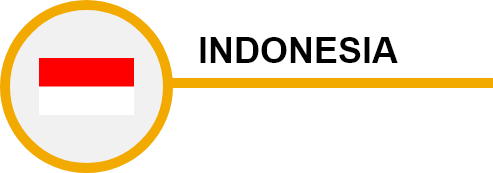BACKGROUND
According to WHO estimates, Indonesia accounts for the third largest TB burden in the world (WHO Global TB report, 2021). Over 824,000 new TB cases were estimated in 2020, i.e., an incidence rate of 301 for every 100,000 people, of which only 393,323 got reported. Nearly 18,000 people were also estimated to suffer from both TB and HIV [1]
Overall, Indonesia falls in all the 3 lists of 30 High Burden countries, i.e., high TB, DR-TB and TB/HIV case loads. [2]
In line with WHO’s ‘End TB Strategy’, Indonesia has developed a roadmap for TB elimination for 2020- 2030 and seeks to accelerate the TB elimination efforts by 2030, and to end TB by 2050. It speaks of expanding equitable access of innovative case detection and treatment strategies and building on relevant multi-sectoral partnerships with the private sector and civil society to reach the 2030 objectives. [3]
Affected by the COVID19 pandemic, country’s TB case notification has majorly dropped in 2020, however, in 2021, the health system has made efforts to revive its TB surveillance practices and the notification is steadily improving to reach closer to previous rates.
In part to address this high burden and to reach their 2030 objectives, Indonesia’s MOH has leveraged the ongoing ‘digital revolution’. Since 2019, a TB information System (SITB) has been developed and implemented. SITB system integrates the two earlier separate technology systems, i.e., SITT and eTB manager , for DS TB and DR TB respectively. It is already functional in almost all Puskesmas (PHCs), hospitals and clinics and enables collection, storage and analysis of individual case-based TB data. In 2021, it has also been integrated with GxAlerts in 310 sites. To complement the MoH data and information center, i.e., Pusdatin’s DHIS2 ASDK (integrated data warehouse for health programs), SITB has mechanisms of data integration that enables comprehensive data review and analysis of TB data nationally, alongside the data from other health programs.
SITB is supported by a few other digital applications as this analytical framework delineates. With strong technical leadership from the Ministry of Health even in the wake of COVID-19, and financial support from USAID and the Global Fund, Indonesia plans to integrate these various digital systems to enable a sustainable implementation plan in accordance with the Roadmap for TB Elimination, 2020-30.
As a key enabler for the implementation of this technology-driven TB case reporting platform, Indonesia’s technology penetration trends stand noteworthy. With nearly 125% of mobile penetration, 67% population using a smartphone and over 73% access to internet in the country, the data reporters are well equipped with an ease in using digital tools, particularly crucial for reporting case-based data.
The implementation of Indonesia’s SITB system presents a few good practices, scalable both in the country and beyond.
Apart from SITB, Indonesia has been implementing various pilots which demonstrate pollical will and focus of Indonesia towards digital health:
WiFi TB: A simplified version of the SITB platform with lesser volume of variables to be captured against each TB case. The system is available for use as a mobile app and is used by General Practitioners, Clinics and other private bodies for reporting data to the national system.
SITRUST and EMPATI: It is a set of digital tools that support long term sustainable TB surveillance, prevent, treatment and control by empowering different relevant stakeholders: local governments, health service providers, community organizations, and the private sector. It is supported by USAID and contains – a mobile app (Empati), a knowledge dissemination tool (SOBAT TB) and a lab specimen transport tracking tool (SITRUST).
Based on the multi-stakeholder discussions, interviews, independent research, and guidance from the National TB Program, this assessment report attempts to produce clear recommendations and way forward towards developing a comprehensive case-based TB surveillance system while leveraging the existing infrastructure, in-house capacity and assets. Detailed recommendations are provided in the later section of the report.

STATUS OF CASE BASED TB NOTIFICATION
As a national platform for all TB case notification, Indonesia TB program primarily uses SITB system to support all TB surveillance, monitoring and response activities:
SITB is the national platform since January 2020 to notify all TB cases. The system supports both online and offline data entry, and has been developed to integrate two legacy systems, i.e., eTB manager (with DR TB data) and SITT (with DS TB data). All the data fed into SITB is owned by the MOH.
Presently, while all newly identified TB patients are enrolled in the SITB platform directly as individuals cases, records for the patients already on treatment are still maintained in the eTB Manager (DR TB cases) or SITT (DS TB cases). The complete transition to SITB is projected for the year 2022.
SITB is used by service delivery stakeholders at different levels: health service facilities, District/ City/ Provincial Health Offices and MOH, as well as civil society organizations to report TB cases.
At hospitals and PHCs where internet is a challenge, the data is entered offline and then downloaded in a ZIP file for sending to the TB program officer, from where it is uploaded online. The system allows data upload at any frequency, however it varies from weekly to fortnightly or monthly, depending on the local arrangements. It is noteworthy that the delay in data entry by the health facility officers (non-routine data updates) and the data syncing delay from offline setups creates a gap in real time access to data, which is one of the key challenges being faced.
SITB was successfully conceptualised and rolled out nationally across all Puskesmas/PHCs in just three years, from 2017 to 2020. In 2021, SITB was also integrated with other health information systems such as Gx Alerts.
Notification of all TB cases has been declared mandatory by the Ministry of Health in 2016, and a supporting application, WiFi TB mobile app, allows private sector partners to upload data directly into the national database.
Development and implementation of the ‘TB Indonesia mobile dashboard’ app has been another notable success. This application shares the information related to the TB program (both from SITB and Wifi TB), and is accessible in the public domain.

ELECTRONIC TB NOTIFICATION DATA COLLECTION AND USE
| TARGET | CURRENT SCALE | COLLECTION TOOLS | DATA TYPE | DATA USAGE | |||
|---|---|---|---|---|---|---|---|

National Level
|
Data Not Collected at this level
|
SITB Dashboard
TB Indonesia mobile dashboard |
|||||

Provincial
level
|
34 | Data Not Collected at this level |
SITB Dashboard
TB Indonesia mobile dashboard |
||||

District Level
(Regencies
and Cities)
|
514 | Data not collected at this level | SITB Dashboard
TB Indonesia
mobile dashboard |
||||

Facility level
|
13000 | 13000 | SITB (Public and
Private hospitals)
WIFI TB (General Practitioners, Private clinics) |
Case-based (DR TB and DS TB) |
SITB Dashboard
TB Indonesia mobile dashboard |
||

Community Level
|
Data not collected at this level | No Data usage at this level | |||||

CASCADE OF CARE MONITORING
PRESUMPTIVE SCREENING
TB Testing
Treatment Initiation
Treatment Monitoring
Treatment Outcome
Contact Tracing






| KEY DATA VARIABLES | Yes/No |
|---|---|
| Demographic details (Age, DOB, Gender) | 
|
| Address and contact details (Country, Division, District, House address) |

|
| Geolocation (GPS coordinates of the household) | |
| Contact details (Phone number/Mobile number, WhatsApp, Email etc.) |

|
| Health Facility address |

|
| Type of health facility (Public, Private etc.) |

|
| Site of TB (Pulmonary, Extra-pulmonary) |

|
| Type of diagnostic test (Microscopy, GeneXpert, TruNaat, CXR, etc.) |

|
| Date of test result |

|
| Drug susceptibility (DSTB, DRTB) |

|
| Treatment Regimen |

|
| Treatment start and end date |

|
| Co-morbidity (HIV, Diabetes, COVID-19 etc.) |

|
| Treatment monitoring/adherence |

|
| Treatment outcomes |

|
| KEY INDICATORS | Yes/No |
|---|---|
| Presumptive screening (proportion) | |
| Treatment initiation (proportion) |

|
| Treatment monitoring/adherence |

|
| Treatment outcome (proportion) |

|
| Spatial distribution of TB notification |

|
| Age-group & sex wise aggregate numbers and proportions notified |

|
| Basis of diagnosis wise aggregate numbers and proportions notified |

|
| Type/site/drug resistance wise aggregate numbers and proportions notified |

|
| Provider source-wise aggregate numbers and proportions notified |

|
| Comorbidity wise aggregate numbers and proportions notified |

|
| Key-population wise aggregate numbers and proportions notified |

|
| Estimate/Target wise notification/treatment coverage (proportions) |

|
| Provider-type disaggregated treatment outcomes (proportions) |

|
| Comorbidity disaggregated treatment outcomes (proportions) |

|
| Key population disaggregated treatment outcomes (proportions) |

|
 Digital
(aggregated)
Digital
(aggregated)
STATUS OF ELECTRONIC CASE BASED TB SURVEILLANCE
Electronic System For Case Based TB Notification
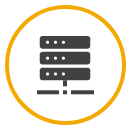
SITB, WIFI TB
Lowest Unit For TB Notification Digitisation
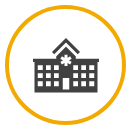
Healthcare facilities (Puskesmas, Private Hospitals, Public Hospitals. General Practitioners, Clinics, etc)
Stage Of Notification

Testing of presumptive TB case
Level Of Access And Use Of TB Notification Data
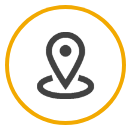
Facility level
Private Sector Notification

Large private hospitals – SITB, Private clinic and GPs – Wifi TB app
Frequency of digitization of TB notification
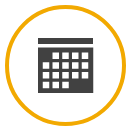
Online – Real time, Offline – Weekly/Monthly
Mode Of Follow-Up With Notified Cases
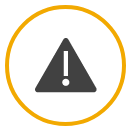
Phone calls, social media, household visits
Scale Of Implementation
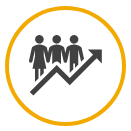
SITB has been established as the national TB case notification system.
Contact Tracing For TB Notified Cases
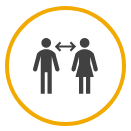
Available
Multi-Channel Enablement
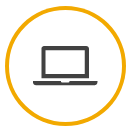
SITB online and offline, Wifi TB mobile app
Govt. order for mandatory TB notification
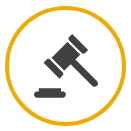
Government order for mandatory TB notification mandates the TB data submission in SITB (as national surveillance system) and WIFI TB (as additional tool for private healthcare notification)
PRIVATE SECTOR NOTIFICATION
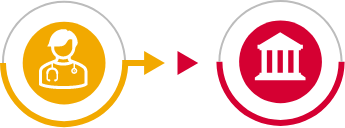
While a section of large Private hospitals have access to report data for TB cases in SITB directly, other Private sector clinics and general physicians notify the public health system of individual cases (not aggregated) through the WIFI TB mobile application. In 2020, 61% of private hospitals and 4% of GPs/private clinics across Indonesia have reported TB data to the national database.
COUNTRY IT CAPACITY
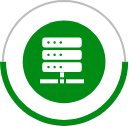
Country Server
Servers are hosted by the National TB Program, and managed by the in-house IT team
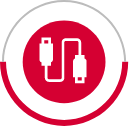
Interoperability
SITB platform allows an integration with other tools through APIs and Data Export mechanisms.
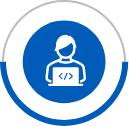
Country IT team
National TB program employs an in-house IT team to handle server management and application maintenance
CURRENT RESOURCES AVAILABLE
USD 700,000 mobilised by USAID and The Global Fund was used to develop SITB over three years.
A total of USD 1.8 million was used to implementing the case based TB notification system: on software development, training health staff, dissemination and communication.
USD 50,000 (as of 2020) is needed as annual recurring cost towards Servers, HR - software development, Ongoing Training, Hardware.

MILESTONES ACHIEVED AND ROAD MAP
2004
Electronic TB reporting started
2009
Implementation of eTB manager (DR TB)
2012
Development and implementation and SITT (DS TB).
2016
TB notification made mandatory
2017
Conceptualisation of SITB: single system for both DR TB and DS TB
2019
Development of SITB system, pilot (2 districts)
2020
Launch of SITB in all provinces
2021
SITB Integration with other health information systems (SIMRS, MESO, GxAlerts)
2022
SITB Mobile app implementation and full utilization of SITB for recording and reporting
2023
Establishing SITB as a one Unified Single System; which would also be implemented in Private Clinics, GPs

OTHER COMPLEMENTING DIGITAL TOOLS
| Purpose | Tools | Channel | Developed By | Supported By | Scale |
|---|---|---|---|---|---|
| Digital Adherence | Empati | Web Application | YKI : Yayasan
KNCV Indonesia |
The Global Fund | National |
| Logistic Management | Dedicated module in SITB | Web Application | MOH | The Global Fund | National |
| SITRUST | Web Application | YKI : Yayasan
KNCV Indonesia |
The Global Fund | National | |
| Laboratory Information Management | Gx Alert (fully integrated with SITB) | Web Application | System one | MOH | Implemented at 310 sites |
| Dedicated module in SITB | Web Application | MOH | The Global Fund | National | |
| Community Led Monitoring (CLM) | Empati | Mobile App | YKI : Yayasan
KNCV Indonesia |
The Global Fund | In the process of integration |
| Contact Tracing Module | Dedicated module in SITB, SITK | Web Application | MOH | The Global Fund | National |

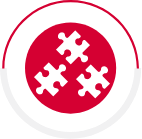

KEY CHALLENGES

Availability, capacity and training of data entry professionals: The crunch on manpower is multifaceted. On one side, the TB officers are having multiple additional responsibilities, and at the same time, the employee turnover rate is quite high.

Digital literacy of both professionals and communities: Mobile apps and other personalised technologies are available and rising in popularity and availability, but not everyone finds them easy to use.

Hardware limitations (Electricity, internet connectivity, server capacity, availability of device for data entry): With Puskesmas often in areas of limited internet connectivity making it difficult to report TB cases in real-time.

Decentralization of monitoring and evaluation: Periodic data monitoring and feedback sharing is mostly not practised from the provincial and district level. Data is generally reviewed directly at the national level and hence the feedback sharing (if at all) becomes less effective.

Real time data availability: With a good proportion of data being entered offline and the differences in frequency of data reporting, developing and getting access to a real-time data dashboard for timely actions becomes difficult.
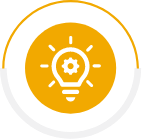
NTP VISION
- ❖ Indonesia’s National TB Program plans to upgrade relevant infrastructure (server capacity, maintenance) in more than 10,000 Puskesmas. By 2021, SITB is due to be functional across over 2000+ hospitals.
- ❖ The NTP will also integrate Empati and other mobile apps into SITB and build a mobile SITB application by 2022.
- ❖ The NTP seeks to build digital capacity among all national staff through technological training programs at provincial, district, and health facility levels.
- ❖ A fully integrated health information system covering all health programs with an Agile framework is envisioned by the MoH.
- ❖ Recruiting more staff, conducting their routine training and tracing and addressing data entry backlog.

RESOURCES NEED
Based on multi-stakeholder discussions, country feedbacks and recommendations for full-filling country’s vision, we have put together an estimated investment requirements and areas needing support for provisioning of a comprehensive case based digital TB surveillance system.
Hardware and Infrastructure :

Mobile Devices (for data collection): Indonesia has 13,000 facilities and to provision mobile device for every facility for case-based TB surveillance, USD 1,950,000 will be needed assuming USD 150 per mobile devices.

Tablet (for data use): Indonesia has 514 districts and 34 provinces, and to promote active data use, each district and region should be given a tablet which would cost roughly around USD 109,600 assuming USD 200 per Tablet devices.

Internet: In case WiFi is not available in each facility, then mobile internet cost of around USD 4,064,400 should be considered (assuming USD 100 mobile data cost for the entire year per facility, district and regional user).

Server: Based on the current volumes of new cases, Indonesia would need an investment of USD 20,000- 30,000 for next 3 years for server and server maintenance.
Note: Existing devices available through other health programs can be leveraged. In that case, the above-mentioned costing can be accordingly considered.
Software Development :

Based on various multi-stakeholder meetings and given the fact Indonesia already have a strong foundation of SITB case-based system for TB, around USD 400,000- 500,000 should be budgeted for a comprehensive TB surveillance system and analytical dashboard for data use.
Capacity Building and Implementation :

After the software development, a dedicated pool of technical resources will be needed to support platform administration, data management and support. A team of 4-6 skilled resources attributing to a cost of around USD 48,000-72,000 per annum should be budgeted (or USD 144,000-216,000 for 3 years assuming USD 1,000 per month per resources). Additionally, reskilling of the current IT team should be budgeted.

Training: This would involve training material development and onsite and remote training of the trainers. A 1-day training should be planned for each of the 514 districts, which could cost roughly USD 100 per training amounting to USD 51,400. Also, a dedicated trainer should be budgeted in case there is none. E-training options with necessary modules also need to be considered.
TOTAL investment of around USD 6.5 - 7 million for 3 years will be needed on developing a comprehensive case-based digital TB surveillance system for Indonesia.
Disclaimer: The above budget is a function of number of facilities, districts and regions and expected volume of data. This only provides a ballpark figure of what is needed in terms of budget.

Healthcare system now change into people centered service and the need for digitalization have been vast than before. But, it doesn’t happen overnight. The digitalization in health care system is just like summer turn into fall – gradual yet very perceptible. We shall prepare to face the new season of the year. The season of digitalization to bring healthcare equity to everyone


Indonesia

Dr. Tiffany Tiara Pakasi, MA|NTP Manager

Recommendations
Following are some of the key recommendations suggested based on the findings of this assessment of country’s digital ecosystem and infrastructure:

Device Procurement
One of the limitations highlighted by NTP is the need to improve the data collection processes at the facility level. To streamline this, procurement, distribution and maintenance of the required data entry equipment like laptops, mobile/tablet devices should be done on an urgent basis. Improving the current infrastructure at the facilities is crucial for a complete transition to digital notification.
Tentative timeline: Month 0-6

System Integration
One of the challenges highlighted by NTP is the leveraging the data collected from the multiple sources into the main SITB system as a central warehouse for effective use.
The current SITB platform and infrastructure needs to be extended to support integration with external systems like TruNaat, Digital X-Ray outputs, digital adherence tools, Logistics management information system and Community-led monitoring systems like EMPATI as visioned by the national TB program with the concept of an integrated Health Information Management System (HMIS).
These data exchanges can be made seamless with API sharing between the platforms and the central repository.
Recommended data exchange/ ETL tools like Talend, Informatica [6.1] , [6.2] , [6.3] makes data management task much easier and simultaneously improves data warehousing. These exchange tools also comply with FHIR , GDPR standards for more secured and seamless data exchange supporting standard data taxonomy and meta data management processes.
Tentative timeline: Month 0-6

Unique Identifiers
The main difficulty being faced by NTP is the challenge in data exchange without the presence of any unique identifiers in SITB. Data from multiple systems can only be integrated by mapping the various identifiers of a case across these systems.
It is recommended while capturing the information of the TB cases they should be linked with unique identifiers like national Id, ensure that duplication of the patient is avoided, and case is tracked, monitored and followed up throughout its treatment journey.
An alternate measure can be the generation of a unique code in SITB by combining multiple attributes from patient demographics and using the same for data exchange.
Tentative timeline: Month 0-1

Data Use
The NTP’s plan clearly emphasizes on the importance and need for improving data use. This can be made possible by making more real time and useful case-based TB data across systems.
While there is an existing SITB dashboard there is a strong need to strengthen and expand the scope of data visualisation and making effective use of data for predictive modelling , data science and for advanced analytics. It is also recommended to use best of the breed tools like Tableau , Power BI [7.1] , [7.2] which offer these features. The current SITB platform offers APIs which can be connected for these applications and used as an extended analytical component of the data analysis framework.
Also , To ensure that there is a seamless data exchange from other platforms like WIFI TB and to support historical data upload from eTB Manager , the data should be extracted, transformed and loaded into the central database.
While SITB supports API other open source ETL tools over My SQL , Post Gres DB and / or WHO powered Xmart [8] which can be installed within the current environment can also be considered. HO Xmart :
Tentative timeline: Month 6-12

Mobile app
One of the challenges reported by the NTP during the assessment processes is inconsistent data connectivity / network issues which delays reporting of cases. One effective way to overcome this is to support the current data collection processes by introducing a mobile application, that has already been envisioned by the NTP team.
Other advantages for a mobile application include better performance , effective use of device features like in house system updates , usage of location , security measures and tracking user patterns and issue log mechanisms and other analytics measures.
Several mobile solutions for real time case-based notification can be explored for local adaption and building the mobile counterpart for SITB. Open source technologies like DHIS2 Mobile App, ODK and KOBO are some notable examples. [9.1] , [9.2] , [9.3]
Tentative timeline: Month 0-12

Continuous training
Any national scale roll-out will have its own capacity and training challenges which requires development of a comprehensive eLearning module allowing all health staffs involved in data collection process for training not only on the new SITB tracker-based application but also on the latest manual of procedure and continued medical education on TB care.
To address the challenges with periodic training of facility level staff to orient them on using SITB for direct data reporting, the MOH must engage in development of a comprehensive eLearning module for app training.
Training tools like Moodle [10] built om standard LMS framework can be reviewed for application rollouts.
Additionally for training and updates on the latest manual of procedure and continued medical education on TB care modules can be developed for TB Health providers, administrators at facility and district level to develop and enhance M&E competencies for ensuring a consistent program oversight, specially for the case-based tracker roll out within the existing applications.
Guide TB platform developed by WHO Philippines is a good example of eLearning module for health staffs involved in TB care.
Tentative timeline: Month 0-3

Server Augmentation & Infrastructure Upgrades
Based on the architecture, the system upgrade would be done with the database, a middleware system, the operating system or the hardware.
Additionally, the architecture should be such that it supports the integration layer which would be needed for data exchange with national/external systems.
The technologies that need to be brought in and the areas of inter-connection need special focus. A review of the existing server architecture is advised along with deployment of automated load testing tools like Selenium, Appium collection tools. [11.1] , [11.2] which can help in database sizing and monitoring adaptation needs for planning.
Tentative timeline: Month 6-24

Application & System Security
Audit
To strengthen the current systems framework and ensuring long term sustenance, it is important to have regular evaluation of the security of the information and systems by measuring how well it conforms to an established set of criteria. This would also include developing a framework which should outline policies in line with recommended security standard policies for a) Patient data management, and b) server and infra guidelines.
Tentative timeline: Month 6-36

Capacity building for application maintenance
Planning for capacity building includes workforce assessment, ranging from ICT professionals to health workers providing care services. Since the application requires regular updates and adaptations, the system support team requires trained personnel on the technology stack in use.
Strengthening the NTP team with trained system administrators will help in improving and expediting the planned implementations.
Tentative timeline: Month 6-24

Patient Interactive Systems
Auto generation of notification and messaging by the system through communication channels like Social Media, IVRS and SMS outbound messages should be explored. Open-source applications like Open MRS can be used for these activities [12] can be used for these activities.
Tentative timeline: Month 6-24
ACKNOWLEDGMENT
We thank the National TB Program Manager Dr Tiffany Tiara Pakasi and the entire NTP team for participating and engaging in the assessment. We would also like to extend our gratitude to Dr Jonathan for providing valuable insights into Indonesia’s vision for creating an integrated health information system.
CONTACT DETAILS
Ministry of Health - Directorate General of Direct Infectious Disease Prevention and Control – National TB Program Gedung Adyatma, Lantai 5, Jl. H.R Rasuna Said Blok X-5 Kavling 4-9 Jakarta 12950
Telephone : +62214247608
Email : subdittb@tbindonesia.or.id
Website: https://tbindonesia.or.id/
REFERENCES
- TB Data References : https://worldhealthorg.shinyapps.io/tb_profiles/?_inputs_&entity_type=%22country%22&lan=%22EN%22&iso2=%22ID%22".
- TB Data References : http://www.stoptb.org/countries/tbdata.asp .
- NSP Plan : https://www.usaid.gov/global-health/health-areas/tuberculosis/resources/news-and-updates/global-accelerator-end-tb/tb-roadmaps/indonesia
- Digital Landscape : https://datareportal.com/reports/digital-2021-indonesia.
- Digital Landscape : https://www.statista.com/statistics/321485/smartphone-user-penetration-in-indonesia/
- System Integration Tools ( Talend , Informatica ) : https://www.talend.com/solutions/data-protection-gdpr-compliance/", https://www.informatica.com/content/dam/informatica-com/en/collateral/solution-brief/informatica-gdpr-solution_solution-brief_3412en.pdf",
- Data Visualisation Tools ( Power BI , Tableau ) : https://powerbi.microsoft.com/en/ https://www.tableau.com/
- WHO Xmart : https://portal-uat.who.int/xmart4/docs/general/Overview.html
- DHIS2 Mobile App : https://dhis2.org/android/. KOBO : https://www.kobotoolbox.org/ ODK https://opendatakit.org/
- Application Training Tool : https://moodle.org/
- Performance Tools ( Selenium , Appium ) : https://appium.io/ , https://www.selenium.dev/
- OPEN MRS : https://openmrs.org/
